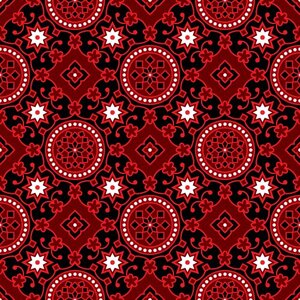- الكلمات - #Fashion #Heritage #best mobile in pakistan #ajrak #sindhi ajrak #Sindhi culture #textile art #traditional crafts
-
- آخر تحديث ١٠ يونيو تعليق ٠ , ٣٥ views, ٠ مثل
More in Politics
Related Blogs
أرشيف
Sindhi Ajrak
الجسم
Sindhi Ajrak is more than just a piece of fabric; it's a symbol of Sindhi culture and heritage. Originating from the Sindh region of Pakistan, Ajrak holds centuries-old traditions and craftsmanship within its intricate patterns and vibrant colors. In this blog, we delve into the captivating story behind Sindhi Ajrak, exploring its cultural significance, the artistry involved in its creation, and its enduring relevance in today's world.
History and Cultural Significance:
The history of Sindhi Ajrak dates back thousands of years, with its roots deeply intertwined with the rich cultural tapestry of the region. The word "Ajrak" is derived from the Arabic word "Azrak," meaning blue, which reflects the predominant color of traditional Ajrak designs. Historically, Ajrak was not only a symbol of Sindhi identity but also held spiritual significance, with its intricate motifs representing various aspects of Sufism and local folklore. From geometric patterns symbolizing unity and harmony to floral motifs representing nature's beauty, each element in Ajrak design carries profound meaning, making it much more than just a piece of cloth.
Craftsmanship and Techniques:
The creation of Sindhi Ajrak is a labor-intensive process that involves several intricate steps, each executed with precision and skill by master artisans. Traditionally, Ajrak is made using natural dyes derived from plants and minerals, resulting in its signature earthy tones. The fabric undergoes a series of treatments, including washing, dyeing, and printing, with each stage requiring meticulous attention to detail. The block printing technique, where wooden blocks carved with intricate designs are used to imprint patterns onto the fabric, is central to Ajrak making. The symmetrical placement of motifs and the rhythmic repetition of patterns showcase the expert craftsmanship and artistic prowess of the artisans, making each Ajrak a unique masterpiece.
Contemporary Relevance:
While rooted in tradition, Sindhi Ajrak continues to evolve and adapt to modern sensibilities, finding its place in contemporary fashion and design. Fashion designers and enthusiasts worldwide are drawn to the timeless elegance and cultural allure of Ajrak, incorporating it into clothing, accessories, and home decor items. The global recognition of Sindhi Ajrak not only preserves its legacy but also provides economic opportunities for local artisans, ensuring the survival of this age-old craft for generations to come.












تعليقات